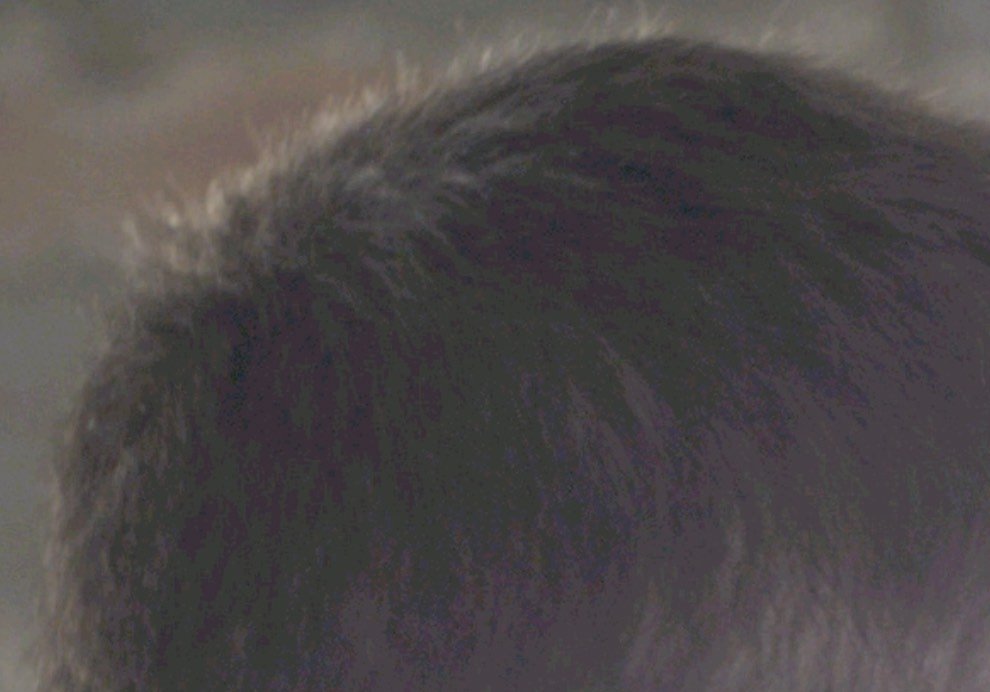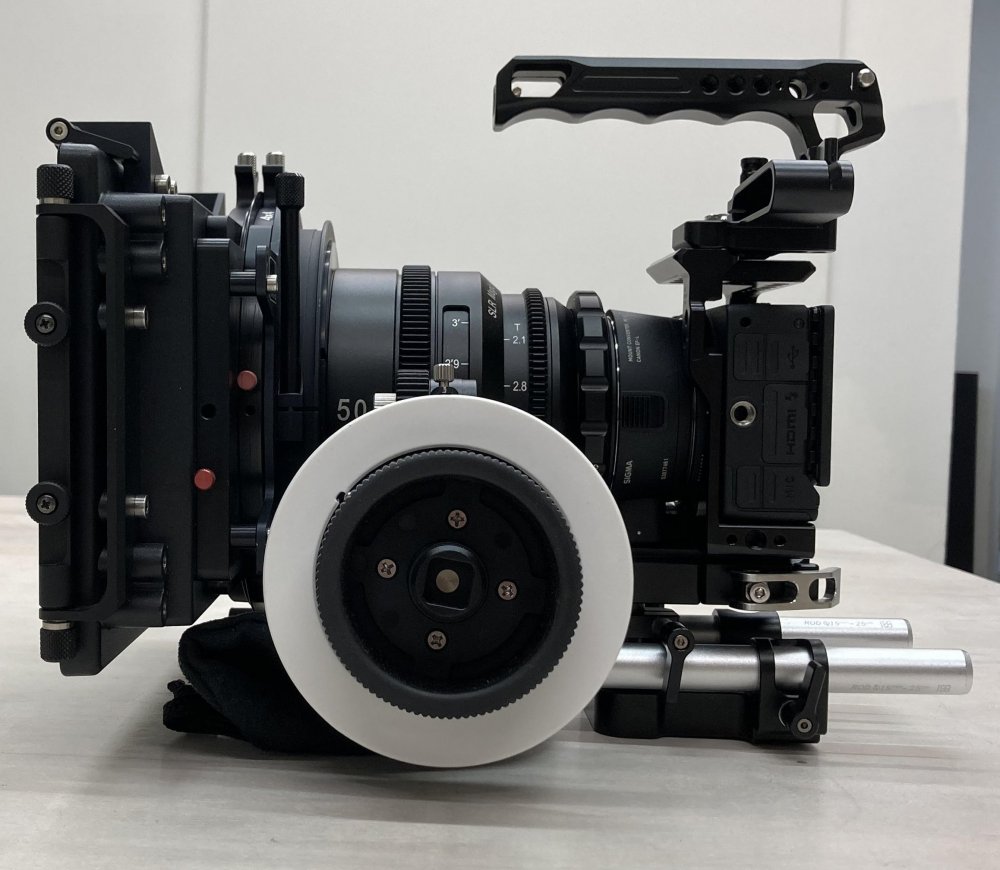Leaderboard
Popular Content
Showing content with the highest reputation on 05/14/2022 in all areas
-

"Looking" professional and how important is it?
Xavier Plagaro Mussard and one other reacted to fuzzynormal for a topic
Man, I’ve gone so far as to hire a separate crew to shoot “a” cam with all the video-village gak —while I run around looking all unassuming, just doing my thing and getting 90% of the video used in the edit.2 points -

R5C VR Test Footage (with Canon 5.2mm 2.8L Fisheye VR Lens)
Pablo Betancourt reacted to HurtinMinorKey for a topic
Below are links to some very rough, ungraded VR180 shots with the R5C using the Canon 5.2mm 2.8L Fisheye VR lens. Note, I’ve only tested these in Virtual Desktop (on a Samsung Odyssey), so I can’t vouch for them in other formats. Please download before playing for best quality. First things first, I wanted to show the ramifications of the fact that Canon’s EOS VR Utility cripples a crucial feature of the R5C for VR: being able to shoot 8K in 60fps. You cannot use the VR Utility on raw files (only with MP4), and since the R5C only records 8K60fps in RAW, you are shit out of luck (at least until someone finds a workaround—which will probably involve rendering your files in an NLE, creating an MP4 version, and then spoofing some metadata so the EOS Utility thinks you are using a native Canon file). Anyway, here’s the first 8K shot at 30fps, and then the same clip sped up X2 to simulate the 60fps look (you can see the judder is significantly reduced—although this will vary depending on what HMD you are using—I’m using the Samsung Odyssey because the extra contrast from OLED is worth the loss of resolution IMO). I chose a seen with a lot of movement intentionally. If a scene has less movement, you probably won’t suffer as much from the 30fps. 8K 30fps: https://drive.google.com/file/d/1uGmzJJzMnw6ZVo5S0kFaHSp6SQ6kdFZW/view?usp=sharing 8K 60fps: https://drive.google.com/file/d/1GGP6O0hRt8MFjcKfcXmiiy4nyANUZyqA/view?usp=sharing Now for some shots in 4K at 60fps. I also included versions sped up (in post) to 90fps, so if you have a 90hz HMD you can see what a big difference it makes to have your fps match the native refresh of your HMD. The 4K is clearly softer than 8K, but not bad. It’s most noticeable on objects in the distance. Things up close generally look quite sharp, even in 4K. In fact, I’d say the best image is taken of a subject that is between 4-10 feet away (which is much closer than the trains in this video). First sequence in 4K: 60fps: https://drive.google.com/file/d/19iV1KAwc9AKK1cLtqttZsaW0guMwgC92/view?usp=sharing 90fps: https://drive.google.com/file/d/1igs1_ErnqWhMDSwocaDw8xlJ2jJU2B8t/view?usp=sharing Second sequence in 4K: 60fps: https://drive.google.com/file/d/1QM5tDfHzXO5-GX-TlwdG7ifJeOfzjfvQ/view?usp=sharing 90fps: https://drive.google.com/file/d/1u8lVM0Z_GYxkxatW81msPzJ8pmcZM7pR/view?usp=sharing Last, some random still images, which don’t do the camera justice. The stills feature is great, the resulting images are very smooth from edge to edge, which is not something I’m used to. Typically a stereo image gets very distorted as you look 90 degrees in any direction. However, this only makes me more frustrated that I can’t shoot 8K 60fps in video. Still Images: https://drive.google.com/file/d/1PBR8sLXu4-GqiSPlBxz6ErmXxp7EfYSH/view?usp=sharing https://drive.google.com/file/d/1BRvRbbTusFd4EfLTacC-VFDwFGq_YVO4/view?usp=sharing https://drive.google.com/file/d/1tVipjBXyyJiAQWz3Ktw8SjEH9XxoQZ20/view?usp=sharing FWIW, I tried to shoot 4K in the 120 fps mode, but It looked like noisy garbage, when I tried to speed it back up to normal speed. There might be something wrong with my workflow here, but Canon forces anything about 60fps into a Slow Framerate mode, and you can’t just take regular speed video at framerates above 60—so it’s possible there is a big quality loss from this process internally. Note: All video clips edited in Adobe Premiere with the Canon EOS VR Utility plugin. The premiere plugin is a must on PC, otherwise you are stuck rendering your videos in the native Canon EOS Utility App, which will turn your videos into a blocky-compressed and ungradable mess. If you have a MAC you can render in PRORES using the native app (or so I’m told), but I haven’t tried it. I can’t Canon charges $5 a month for the app, it looks like it took $5 to create. Really all its doing is transforming the image(s) so that the two circular images (two dots) recorded by the sensor will fill up the entire frame. PS: let me know if you have trouble playing any files. Most are file are h264, but the 90fps are H265.1 point -
This guy's channel is interesting. Always cool to hear a perspective from someone who is directing the biggest of films but also does micro indie projects.1 point
-
Guess those Meikes are also extremely good. We have so many great choices nowadays. 🙂 If I would build the set today, because that DC crop mode of the fp works so perfectly, I most likely would go for 25mm, 50mm and 100mm...Cover what is in between with the crop mode.1 point
-
SIGMA FP with ProRes RAW and BRAW !
webrunner5 reacted to Llaasseerr for a topic
Thanks for the detailed answer! I've been testing a lot more raw files in the last day that I found linked off youtube recently (see linked video). I mentioned that I would lean towards re-pegging the DR by at least +3 stops since the camera holds shadow detail very well. Assuming base ISO 100, it seems you can cleanly push +4 stops with EI 100-800 in daylight and then maybe +3 with ISO 3200 in a darker scene if managed. Not sure about ISO 1600, it apparently has a bit less range that 800 and 3200? My latest question is around bad posterizing in the shadows with a green tint. I'm attaching a crop of a +4 stop push in post on one of the test clips from the upload I linked to. I could be imagining this, but I think I've read here on eoshd before that people are seeing a green issue in shadows sometimes. I don't know if this is the issue here, though, or if it's to do with the fact that these files were passed through slimRAW with lossy DNG compression, where generally lossy DCT compression can unduly affect shadows because there's an assumption that it won't be seen. What I'm hoping is that with lossless or losslessly compressed DNGs, this would not be an issue. But additionally, I've noticed that very high contrast lenses (Sigma) and night time scenes make the blacks fall to zero. This isn't necessarily an issue, but I would rather have them just off the zero floor. Not just because any compression algorithm can cause problems all the way down there, but also that if shooting to push 2-4 stops in post then too much of the image is clipped on the zero end and it looks excessively contrasty. So it seems a good solution regardless of any compression issues is to shoot with something like a Tiffen Ultra Con 1 and/or a lower contrast vintage lens, assuming you can't just add a bit of bounce fill in a controlled lighting situation. Obviously this appeals for more of a run and gun setup. If the green/banding issue is because of the sensor, that obviously sucks!1 point -
I think that Q ^ is for Tom but I went with EF myself, but for the reasons of the Fotodiox VND adapter. Either mount option will make anyone look pro. For sure.1 point
-

"Looking" professional and how important is it?
Mark Romero 2 reacted to MrSMW for a topic
Your WB might be slightly off there Tom? 😜1 point -
Yeah, mine is 8 lbs built like this: Follow Focus looks bigger than the camera! It works well on a tripod and slider, then for some quick handheld I pull the follow focus off and operate with my left hand under the rails and adjust aperture and focus with my left thumb and have my right thumb press the false color button. All the weight tips forward though and I have a bag underneath to prop it up on the table. It's really how well you can operate without coming across issues, maybe the matte box and handles would get in the way in some cases and you've leaned into leaving them off to make it smoother for you. Using small cameras definitely gives you a lot of options to make different configurations. And the client has hired you presumably because they've already seen your work.1 point
-
Why do camera producers have a hard time to put the codec options out for convinient and comprehensible reading. DJI and ZCam are nervewrecking when it comes ot codec infos. 10bit, 422, bitrate, framerates, that´s what we want to know about, the top specs and those easily accessible to read, pleaaaaase. Mini 3 Pro is still 8bit and most of the low and mid range Zcams don´t offer Prores. Shouldnt be too hard to make that more transparent. It´s no fun wasting time trying to find the hard facts when they should be headline, even if they suck but then even moreso.1 point
-
It is kind of up to you. Do you want to deal with ignorant clients that you have to put on a show for? You could also just educate the client and hope they are receptive. Honesty always depends on how much you need the money lol. Showbiz is inevitably a pretty showy industry although it's a little more justified on the higher end of things. One of the simplest ways to make more money is simply to own more elaborate and more expensive gear, but it's not always the way and capturing good content can make up for any lack of "professional" gear. I did a short about a month back and pulled out all the big stuff. I actually think we may have been able to do a better job with a small DLSR as we just didn't have the time do be using a lot of the heavy duty stuff we were using. It looked great on set though.1 point
-

SIGMA FP with ProRes RAW and BRAW !
Llaasseerr reacted to Ryan Earl for a topic
The HD capture in camera in 12 BIT DNG is where I've seen moire and aliasing in more normal shooting conditions, like hair and details like eyebrows. Though the rolling shutter is much better. It's supposed to be half of UHD I think, about 10 ms? With the UHD, I've haven't seen it where it ruins a shot, but have had it ruin shots on the Blackmagic cameras, so I have bought the OLPF and IR Cut where I could. Like a fashion / clothing shoot on the URSA 12K when I was initially trying that camera on its v1 firmware. Huge parts of a jacket were unusable, so I actually cropped in around it to a head shot later. The RAWlite helps a lot adding extra IR Cut too. The original URSA 4.6K that I still have is without one, there I've used a Schneider 1/4 Classic Soft or softer lenses and a Hoya IR Cut. In ProRes 4444 vs DNG the artifacts are blurred enough so I don't worry about it. With the Sigma FP I've been surprised I haven't seen it in normal shooting, and it's much cleaner in terms of IR. It doesn't need the extra IR cut. Though it can have a digital sharpness where I will still cut it with soft filter. In a test shot, with a lot of detail and packaging with tiny print the Sigma FP does better than the URSA 4.6K. The URSA 4.6K will have more artifacts spread through the objects and print details where it isn't there on the Sigma FP. Though in the color checker and charts it is there in ultra fine details but looks better again than the URSA 4.6K. So I'm not personally wishing I had an OLPF if it existed or thinking it necessarily should have been added.1 point


